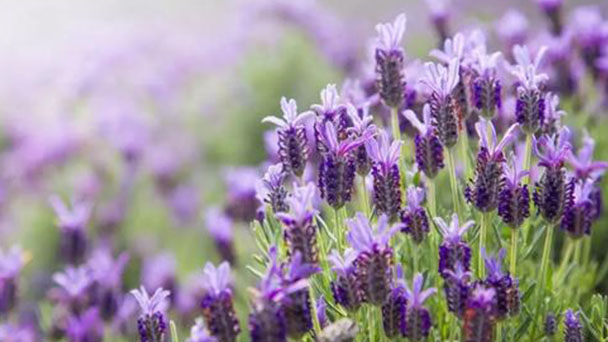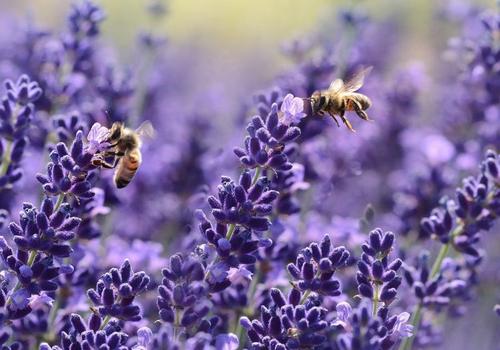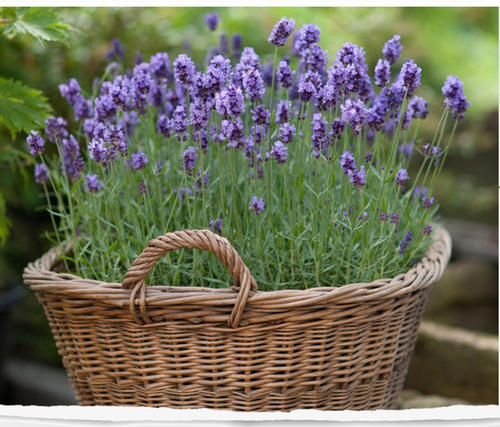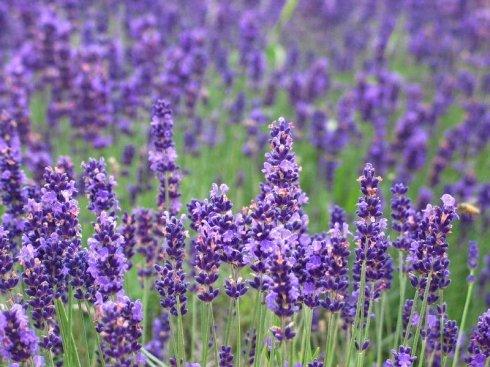How to grow and care for lavender
Written by Maggie
Jul 15 2021

Lavender can be planted in the spring from April to May. First of all, you need to prepare good Lavender seeds, and then use wet paper towels for germination, with a 10cm diameter clay pot as the container, and loose and breathable soil as the substrate, sow the seeds in the soil, and then water the soil thoroughly, and put it in the astigmatism for careful maintenance for a week to take root and germinate. The following are steps to grow lavender and growing lavender care.

Steps to grow lavender
1. Accelerating bud processing before growing
Every spring in April to May, you need to prepare a good Lavender seed, then take out a piece of paper towel, spray water on the paper towel to make it wet, and then wrap the seed in it, put it in a cool and ventilated place for 3 to 4 days, or soak the seeds in water for a day to promote germination.
2. Basin soil preparation for growing lavender
If you want to potted Lavender, you need to prepare a 10cm caliber clay pot as a container, and then prepare a loose and permeable, fertile soil with good drainage. Garden soil, peat and perlite can be mixed in a ratio of 6:2:2 to make potting substrate.
3. Sow and germinate
In fact, the whole process of planting Lavender is not complicated. First, sow 3-4 seeds in the soil, cover the seeds with a 2cm thick layer of soil, and then pour the soil thoroughly with water. After about a week, the seeds will take root and germinate.
4. Management after growing
When Lavender's seeds are planted in the soil, don't water or fertilize them. Instead, place them in a shady place with a temperature of about 20 ° C and wait for them to take root and germinate before watering or fertilizing them. Also spray them with carbendazim every other month to prevent diseases and pests.

Growing Lavender care
When we grow and care for Lavender, drainage soil mixed with vermiculite, perlite and peat soil should be provided. Water in the morning and evening. Be careful to dry and water thoroughly to avoid water accumulation. Pay attention to shading in summer, the rest of the time for full sunshine treatment, control the temperature between 15 ~ 25℃, replacement of bone meal base fertilizer every three months, monthly topdressing in spring can make it grow vigorously. The following are growing lavender care. If you are interested in growing lavender indoors, please read this article How to Grow Lavender Indoors: Growing & Caring Lavender Plants Indoors.
1. Soil care for growing lavender
When we grow and care for lavender, choose sandy soil for planting, so that it has a good drainage, to prevent soil moisture to Lavender root rot phenomenon. An equal mix of vermiculite, perlite and peat soil is often chosen to make it suitable for Lavender growth.
2. Water care for growing lavender
It is necessary to pay attention to correct watering when raising Lavender. Lavender does not require much water. Generally, it is OK to pour thoroughly when the soil is dry. When watering, pay attention to the soil to be watered thoroughly, to avoid the leaves splashing water and rot, and generally choose to water in the morning and evening, so that Lavender can better absorb water.
3. Light care for growing lavender
When we grow and care for lavender, Lavender needs plenty of sunlight to photosynthesize as it grows, allowing it to flower more. Generally, we choose to have all-day illumination in spring, autumn and winter festivals to make it sunny. However, in summer, we should pay attention to shade in time to prevent the hot sun from sunburn Lavender and make it grow poorly.
4. Temperature care for growing lavender
The suitable growth temperature of Lavender is between 15 ~ 25℃, and Lavender can grow at a slightly higher or lower temperature than the suitable temperature. However, the high temperature should not exceed 35℃, which will cause the Lavender to turn yellow. Meanwhile, the low temperature below 0℃ in winter should also be prevented, which will cause the Lavender to enter a dormant state and stop growing.
5. Fertilizing care for growing lavender
Lavender doesn't need much fertilizer, and it can grow with a bone meal base every three months. When we grow and care for lavender in the spring of the growth boom period, it can be appropriate topdressing to make its vigorous growth, monthly top dressing a special flower fertilizer or topdressing NPK compound fertilizer, fertilizer should be diluted with water to prevent excessive thick burn roots.

Latest Updated
- Benefits of Bugleweed - 7 Science-backed Health Benefits
- Bugleweed Dangers & Side Effects - Is It Poisonous?
- How to Plant Evergreen Trees - What You Should Know
- When to Plant Evergreens - Grow Guide for Evergreen Trees
- 12 Wonderful Evergreen Shrubs for Your Garden
- 12 Popular Evergreen Plants with Pictures for Beginners
- When And How To Prune A Lilac Bush Like a Pro
- How to Grow & Care for Lilac Vine (Hardenbergia Violacea)
- Japanese Lilac Tree (Syringa Reticulata) Care & Propagation Guide
- Shumard Oak Pros and Cons - What to Know
Popular Articles
- Winter maintenance of Antirrhinum Majus
- How to Grow Terminalia Mantaly Tree
- How to Grow and Care for Crossostephium Chinense
- How to grow Antirrhinum Majus in spring
- Peristeria Elata (Dove Orchid) Profile: Info & Care Guide
- Underwatered Snake Plant (Sansevieria Trifasciata) - Signs And How To Fix
- How to Care for Brazilian Jasmine Plant (Mandevilla Sanderi)
- How to Grow & Care for Graptopetalum Purple Delight in Summer
- Rosa Chinensis (China Rose): Plant Growing & Care Tips
- How to Care for Baby Sun Rose (Aptenia Cordifolia)